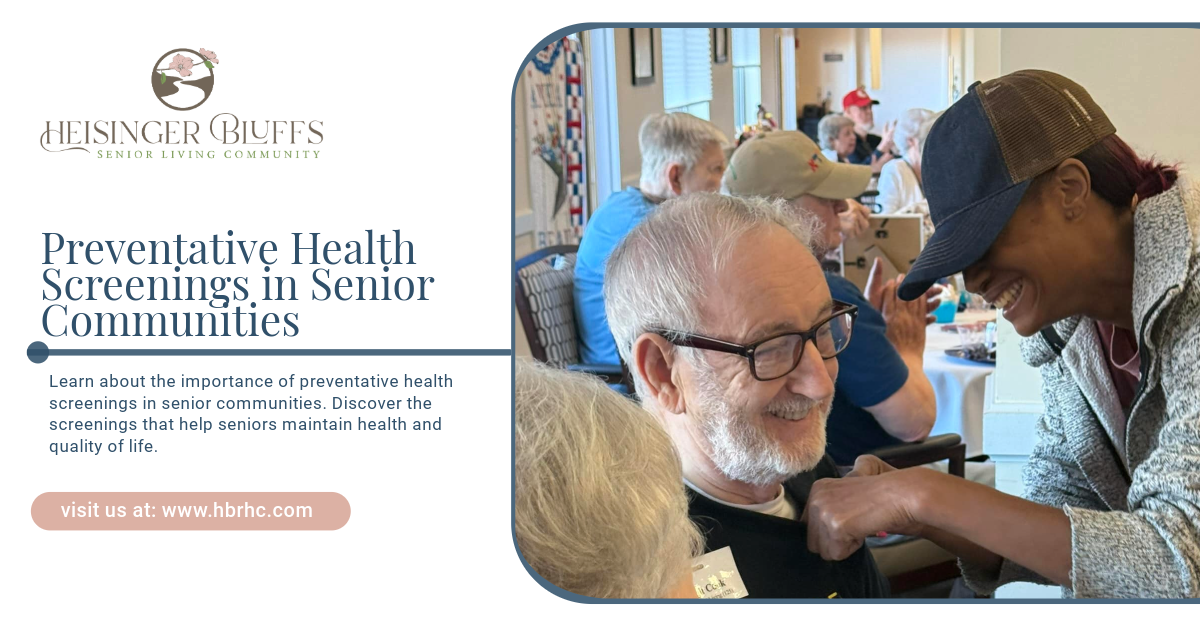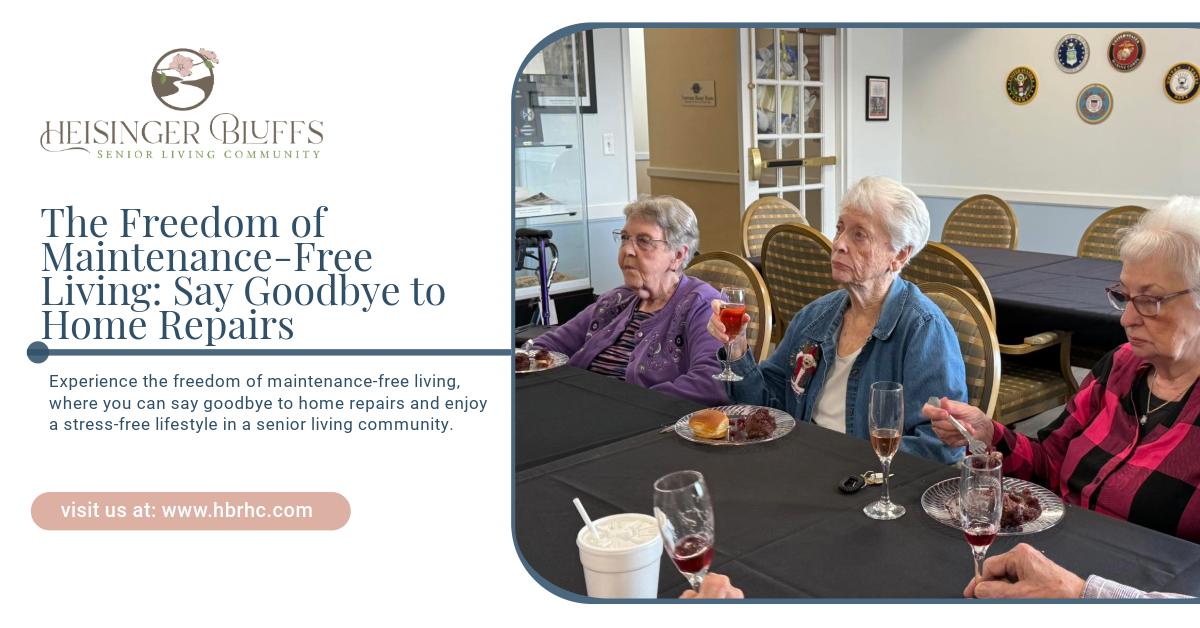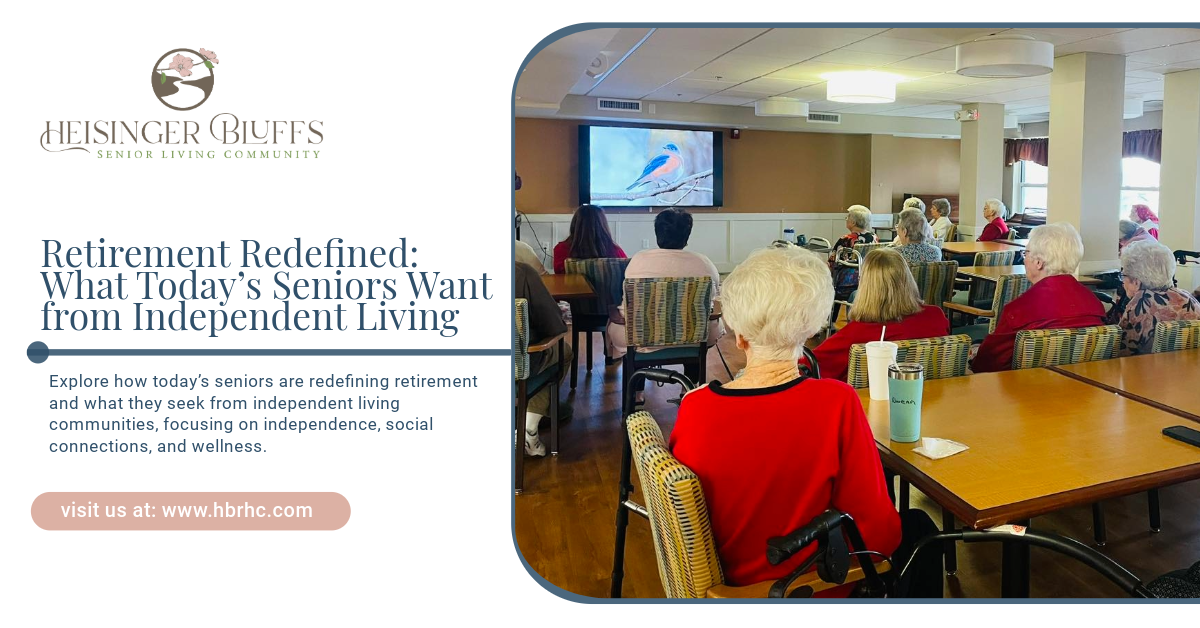Common Fears About Senior Living: How to Address Them

Common Fears About Senior Living—and How to Address Them
As people age, the prospect of moving into a senior living community can bring about a mix of emotions. Some may view it as a positive transition that offers care, support, and companionship, while others may feel apprehensive. Fear of change, loss of independence, and concerns about quality of care are just a few common fears seniors may have when considering this life transition. However, understanding these fears and addressing them head-on can make the decision-making process much easier for both seniors and their families.
In this blog, we’ll explore some of the most common fears surrounding senior living and provide practical advice on how to address these concerns to ensure a positive transition.
1. Fear of Losing Independence
One of the most common fears that seniors have about moving into a senior living community is the fear of losing their independence. Many people have spent decades managing their own lives and making decisions, so the idea of giving that up can feel daunting.
How to Address This Fear:
While senior living communities offer assistance and support, the goal is to enhance, not diminish, independence. Modern senior living facilities often provide a variety of living options, from independent living to assisted living, based on individual needs. Seniors can maintain their autonomy by choosing the level of support they need, whether it’s help with housekeeping, meal preparation, or personal care.
In fact, many senior communities allow residents to maintain their own schedules, hobbies, and interests while offering assistance with tasks that have become challenging over time. This balance between support and independence allows seniors to continue leading fulfilling lives without sacrificing their freedom.
2. Fear of Isolation and Loneliness
Another significant concern is the fear of being isolated and lonely in a senior living environment. Seniors often worry about leaving behind their familiar social circles and moving to a new, unfamiliar place where they may not know anyone.
How to Address This Fear:
Today’s senior living communities are designed to encourage social engagement and prevent isolation. Most communities offer a variety of social activities, from group exercise classes and movie nights to hobby clubs and game nights. Additionally, many communities have staff dedicated to fostering a sense of community, ensuring residents have opportunities to form meaningful relationships.
Many senior living communities also have shared spaces where residents can gather, such as dining rooms, lounges, and outdoor gardens. This sense of community is vital in preventing loneliness and helping seniors build new friendships. Residents can also stay in touch with family and friends through phone calls, video chats, and scheduled visits, ensuring they maintain their connections outside the community.
3. Fear of Being Placed in a "Nursing Home"
The term “nursing home” often carries a negative connotation. Many seniors fear being placed in a facility that feels more like a hospital than a home. This fear is often fueled by outdated perceptions of institutionalized care, with long hallways, sterile environments, and little personalization.
How to Address This Fear:
Today’s senior living communities are vastly different from traditional nursing homes. They offer a more home-like atmosphere, with private apartments, comfortable living spaces, and personalized care. The shift towards a more community-oriented and homelike environment is a critical aspect of modern senior living. Many senior living communities even offer memory care units designed specifically for residents with dementia, providing tailored care in a warm and welcoming setting.
Moreover, the goal of these communities is not to confine residents, but to offer a setting where they can thrive, with access to medical care, personal assistance, and a range of amenities designed to improve quality of life.
4. Fear of Financial Burden
Senior living can sometimes seem expensive, and many people fear that they won’t be able to afford the cost of moving into a senior living community. It’s a legitimate concern, especially when considering long-term care costs, which can be overwhelming for families and seniors who are on a fixed income.
How to Address This Fear:
While it’s true that senior living communities require financial investment, many communities offer a range of options to accommodate different budgets. It’s important to understand the pricing structure and what’s included in the cost. Many communities offer all-inclusive pricing that covers meals, utilities, housekeeping, and medical services, eliminating surprise expenses.
Additionally, there are financial assistance options available, including Medicaid, long-term care insurance, and veterans’ benefits, that may help offset costs. Families can also work with senior living advisors to find a community that fits their financial situation while meeting their care needs.
5. Fear of Deteriorating Health and Care Needs
As people age, there may be a fear of health declining to the point where they need constant care. Seniors may worry about their health deteriorating and not receiving the right type of care or attention in a community setting.
How to Address This Fear:
Senior living communities offer varying levels of care, including independent living, assisted living, and skilled nursing care. This flexibility means that residents can receive as much or as little help as they need at any given time. Some communities also provide on-site healthcare services, such as physical therapy, medication management, and 24-hour nursing support.
For seniors with specific health needs, many communities offer specialized care units, such as memory care for those with dementia, or rehabilitative care for those recovering from surgery or illness. By discussing health concerns upfront and choosing a community that aligns with specific medical needs, families can ensure their loved ones receive the right level of care.
6. Fear of Change
Change can be overwhelming for anyone, and this is particularly true for seniors who may have lived in the same home for decades. The prospect of moving to a new environment with unfamiliar routines, people, and surroundings can be anxiety-inducing.
How to Address This Fear:
One of the best ways to ease the transition is to get involved early. Many senior living communities offer trial stays, allowing prospective residents to experience life in the community before committing. This gives seniors and their families a chance to familiarize themselves with the environment, meet fellow residents and staff, and get comfortable with the new routines.
Additionally, families can help ease the emotional impact of the move by keeping important belongings close and creating a space that feels like home. This personal touch can make a significant difference in helping seniors feel comfortable and settled in their new home.
7. Fear of Losing Privacy
Many seniors value their privacy and may fear that moving into a community will mean a loss of personal space. They might worry about sharing rooms, being constantly monitored, or having their routines disrupted by other residents and staff.
How to Address This Fear:
Senior living communities understand the importance of privacy and offer a variety of living arrangements to accommodate individual preferences. Many communities offer private apartments or rooms with en-suite bathrooms, allowing residents to maintain their personal space. Even in communal areas, seniors can choose how much interaction they want with others.
Moreover, staff members respect residents’ privacy, with personal care services provided on a need-to-know basis. Seniors can enjoy their privacy while still benefiting from the social opportunities and support available in the community.
Conclusion: Overcoming Fears with Knowledge and Support
The transition to senior living can feel intimidating, but it’s important to remember that it’s a positive step toward a fulfilling and supportive lifestyle. By addressing common fears about senior living—such as loss of independence, isolation, and health concerns—families and seniors can make more informed decisions about their future.
At Heisinger Bluffs, we understand the importance of addressing these concerns with compassion and understanding. Our goal is to create a welcoming environment where seniors can continue to thrive, receive the care they need, and maintain their independence.
Frequently Asked Questions
How can I determine which type of senior living is right for my loved one?
The best way to determine the right type of senior living is to assess your loved one's current needs, including medical care, social interaction, and level of independence. Most communities offer assessments to help families choose the best fit, whether it’s independent living, assisted living, or memory care.
What should I look for in a senior living community?
Look for a community that offers the right mix of services and amenities, a welcoming environment, and positive reviews from residents and families. Consider location, cost, care options, and the overall atmosphere.
How can I help my loved one adjust to life in a senior living community?
Start by visiting the community together, allowing your loved one to meet staff and other residents. Involve them in the decision-making process and encourage them to engage in social activities. Moving personal belongings can also help make their new space feel like home.
Sources:
- https://www.aarp.org/caregiving/basics/info-2022/housing-options.html
- https://www.nhs.uk/mental-health/feelings-symptoms-behaviours/feelings-and-symptoms/loneliness-in-older-people/
- https://www.medicaidplanningassistance.org/assisted-living/
- https://pmc.ncbi.nlm.nih.gov/articles/PMC6011296/











